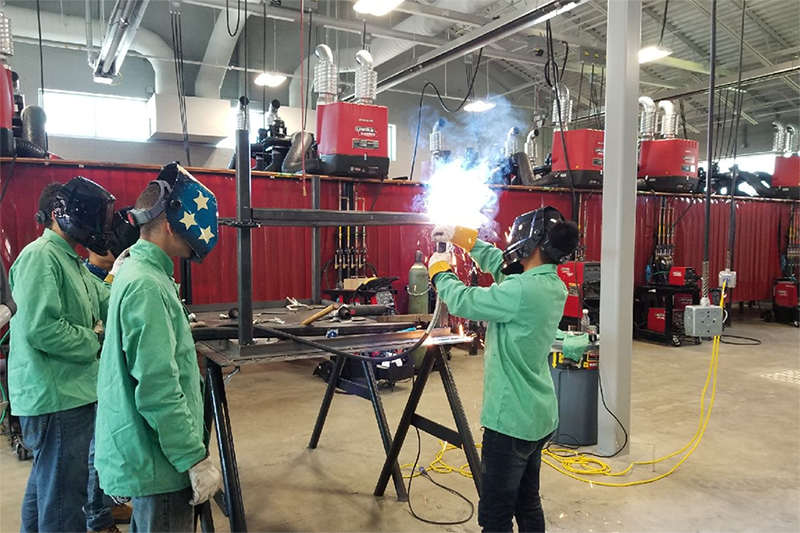Go to work in many industries as a specialist in one of the most highly paid skilled trades.
What is Welding Technology?
Welding is the most common way to join metal parts. If you like working with your hands and enjoy building or repairing metal parts, consider a career as a welder. Job prospects for skilled welders are good, because it is difficult to find qualified workers. Advanced technology is finding more uses for welding in the workplace.
Getting Started
What are my degree, diploma, and certificate options?
- Arc Cutter Certificate
- Sense Level 1-Entry Welders
- Gas Metal Arc Welding Certificate
- Gas Tungsten Arc Welding Certificate
- Gas Welder
- Production Line Welder Certificate
- Shielded Metal Arc Welding Certificate
- GMAW Pipeline Welder
- GTAW Pipeline Welder
- Welder Helper Certificate
- GMAW Tack Welder
- GMAW Welder Helper
- GTAW Tack Welder
- GTAW Welder Helper
- SMAW Tack Welder
- SMAW Welder Helper
How Do I Pay For This?
Worry no more. With the lowest tuition in Kentucky, financial aid options, and a helping hand to guide you through the application process, we have you covered. GCTC will help you reach your goals at a price that won't break the bank.
What Else Do I Need to Know?
Length of Program
You can earn an associate in applied science degree in two years if you maintain full-time status.
This information should not be considered a substitute for the KCTCS Catalog. You should always choose classes in collaboration with your faculty advisor to ensure that you meet all degree requirements.
